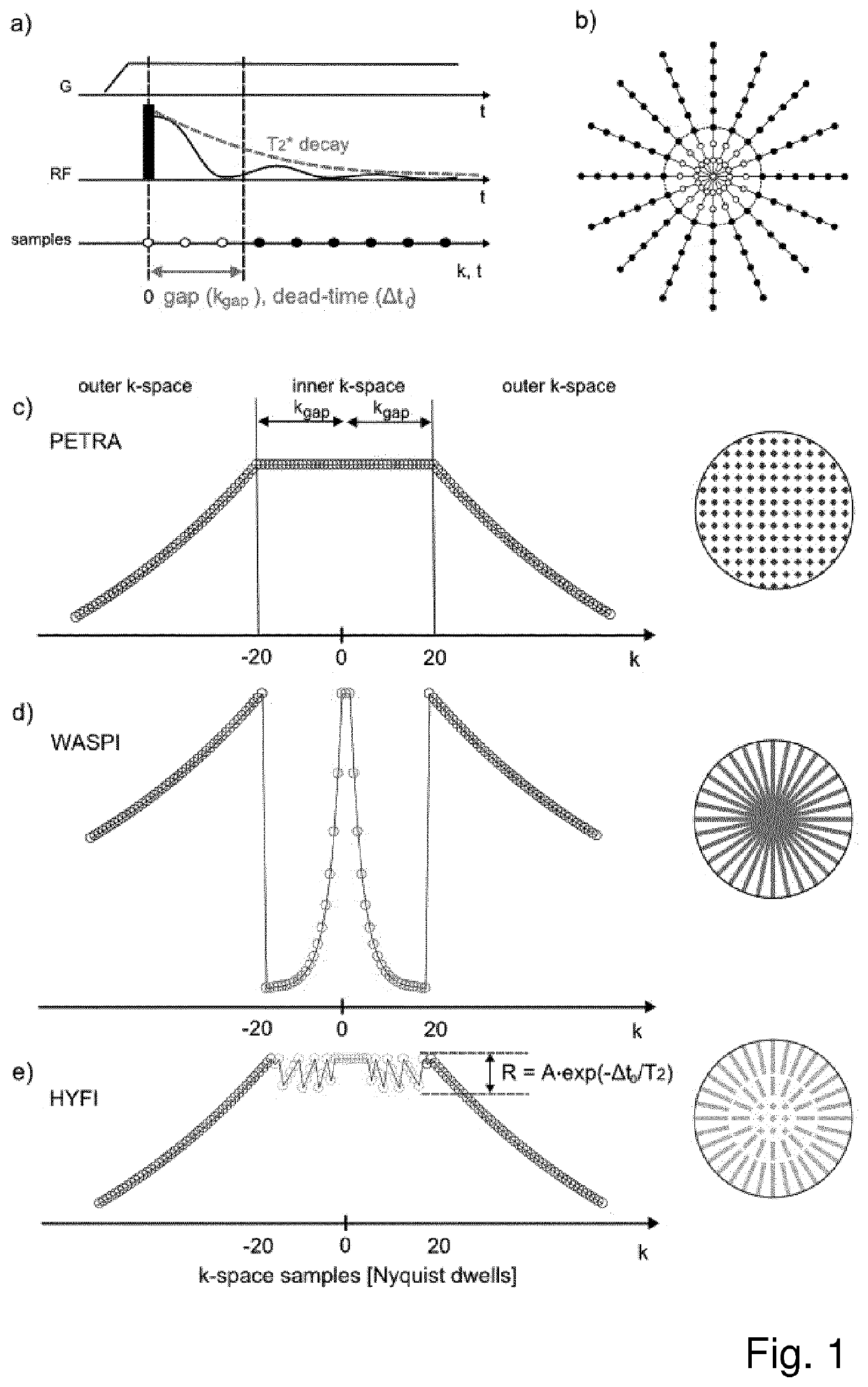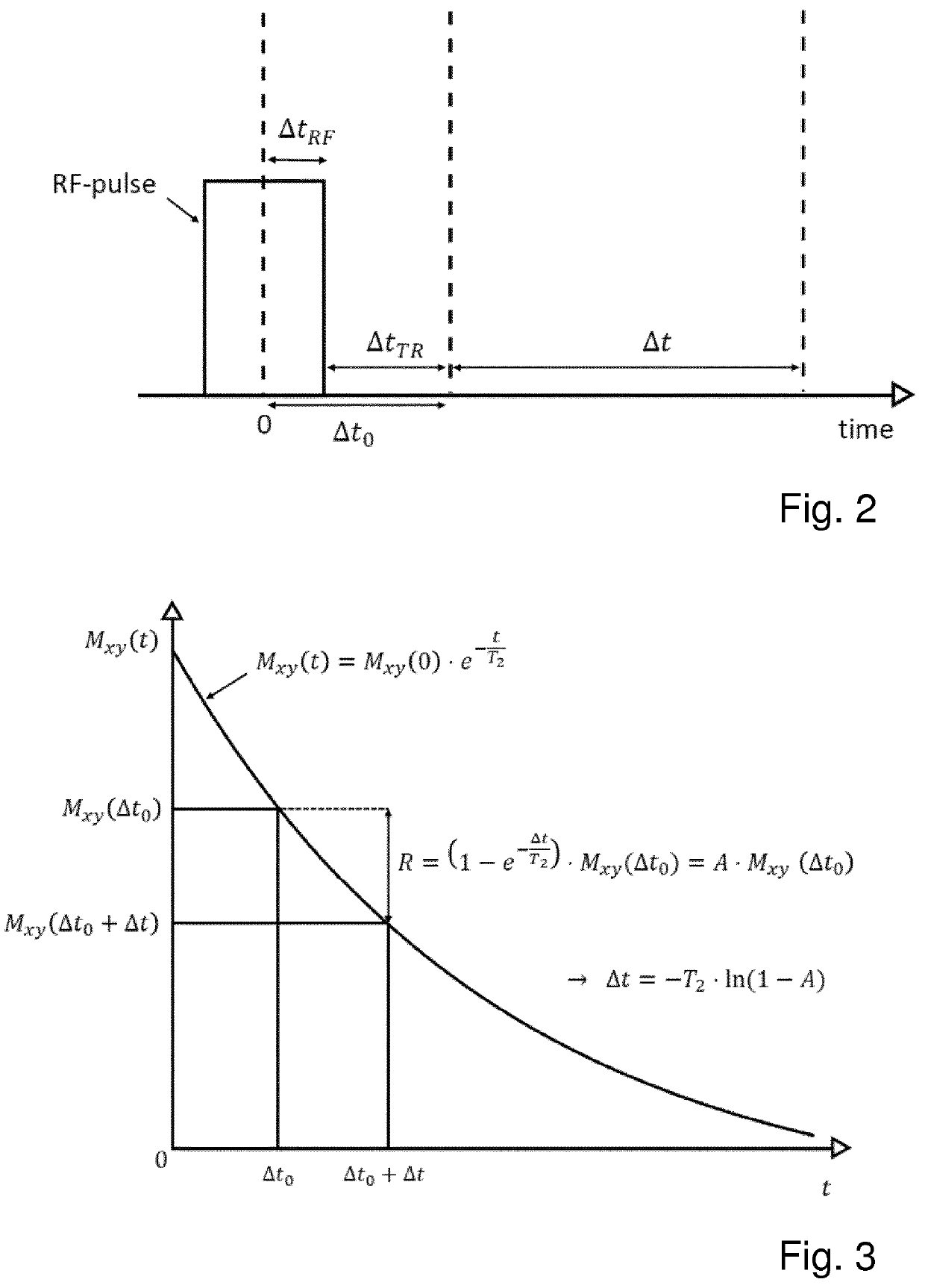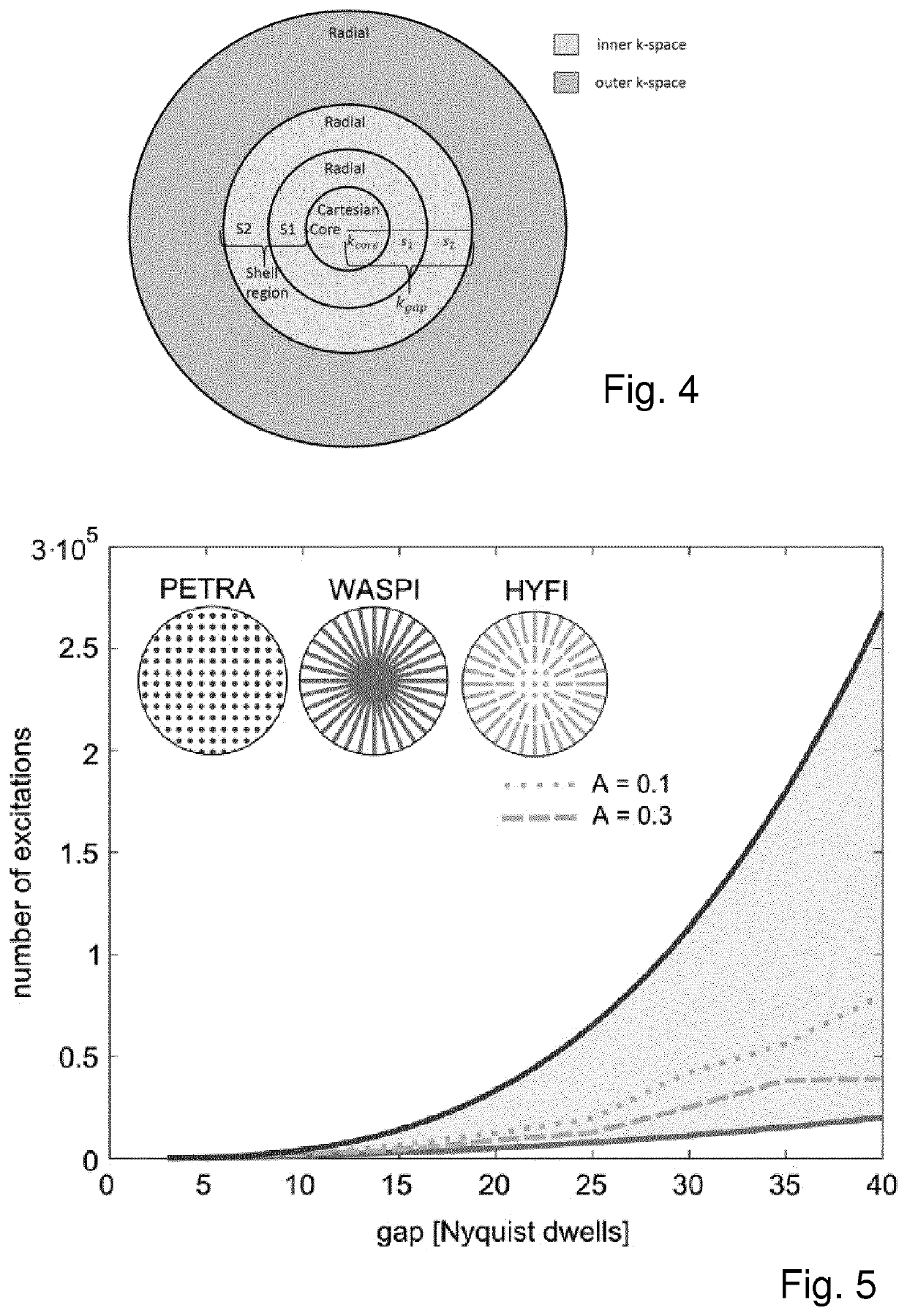Magnetic resonance imaging method with hybrid filling of k-space
- Summary
- Abstract
- Description
- Claims
- Application Information
AI Technical Summary
Benefits of technology
Problems solved by technology
Method used
Image
Examples
example
[0096]A comparison of magnetic resonance imaging acquired with PETRA (state of the art), WASPI (state of the art) and HYFI (present invention) is shown in FIG. 7. Magnetic resonance imaging was performed with PETRA (equivalent to HYFI with A=0), WASPI (equivalent to HYFI with A=1) and HYFI (A=0.2).
[0097]First Row: 1D representations of the signal T2-weighting in k-space. The signal amplitude in the outer k-space region is exponentially decaying and equivalent in all techniques. However, the acquisition of the inner k-space region is specific to each technique. In PETRA, the signal is acquired point by point at a constant time following the spin excitation leading to a constant T2-weighting in the inner k-space region. In WASPI, the inner k-space region is read out radially with a reduced gradient strength causing stronger signal decay and amplitude jumps at the border separating inner and outer k-space regions. In HYFI, the inner k-space region is split into several sub-regions: a c...
PUM
 Login to View More
Login to View More Abstract
Description
Claims
Application Information
 Login to View More
Login to View More - R&D
- Intellectual Property
- Life Sciences
- Materials
- Tech Scout
- Unparalleled Data Quality
- Higher Quality Content
- 60% Fewer Hallucinations
Browse by: Latest US Patents, China's latest patents, Technical Efficacy Thesaurus, Application Domain, Technology Topic, Popular Technical Reports.
© 2025 PatSnap. All rights reserved.Legal|Privacy policy|Modern Slavery Act Transparency Statement|Sitemap|About US| Contact US: help@patsnap.com



